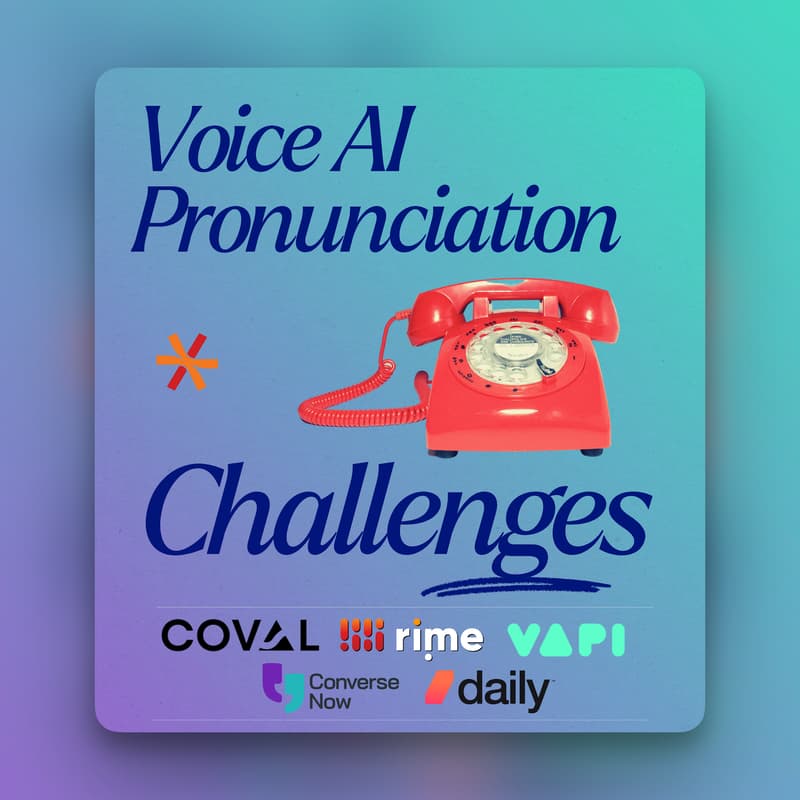

Voice AI Pronunciation Challenges
Join us for a deep dive into the challenges with pronunciation when deploying voice AI applications in production:
Why TTS models struggle to pronounce certain words like Chipotle or Acetaminophen
What are phonemes?
Custom pronunciation without needing to learn the international phonetic alphabet (IPA) or brute force spellings
Scaling challenges
Switching to a different TTS provider while in production
Tradeoffs between emotional range and pronunciation consistency
Misleading latency promises and tactics to reduce latency
New tools to catch pronunciation failures before your customers notice
How to set up useful metrics that matter beyond TTFB
War stories from the Voice AI trenches
If you're actively building and scaling Voice AI applications, this event is for you!
Agenda:
6:30 – 7:30: Lightning Talks
Rime: [To be announced]
ConverseNow: The Latency Mirage: Designing for Perception, Not Milliseconds.
Coval: Newest discoveries of benchmarking over 12 different TTS providers & what you should know before picking yours!
Daily: [To be announced]
7:00 – 7:30: Panel Discussion on how to scale with reliable TTS performance:
7:30 - 8:30: Networking
About the Hosts
Rime builds speech AI infrastructure and blends advanced ML with deep linguistic and sociolinguistic insight to create ultra-realistic multilingual voices that breathe, laugh, and carry the subtle rhythms of real everyday speech.
Coval builds the reliability infrastructure for Voice AI agents, where QA, product, and engineering teams collaborate to test, evaluate, and monitor voice agents at scale.
ConverseNow builds voice AI for restaurants. ConverseNow delivers a branded and fully customizable experience for each guest to improve customer satisfaction, drive frequency of spend, and give restaurants control through AI Your Way.
Daily is the maintainer of Pipecat, an open source voice orchestration framework for building real-time conversational AI. Pipecat provides the low-latency infrastructure to connect speech recognition, LLMs, and text-to-speech into seamless pipelines, enabling developers to create natural, responsive, and reliable voice experiences.
Vapi provides the developer infrastructure for building and scaling voice-enabled applications. With a simple API, teams can integrate speech recognition, LLMs, and text-to-speech into production-ready voice experiences. Vapi handles the heavy lifting of telephony, latency optimization, and session management, so developers can focus on creating reliable, natural conversations rather than plumbing.